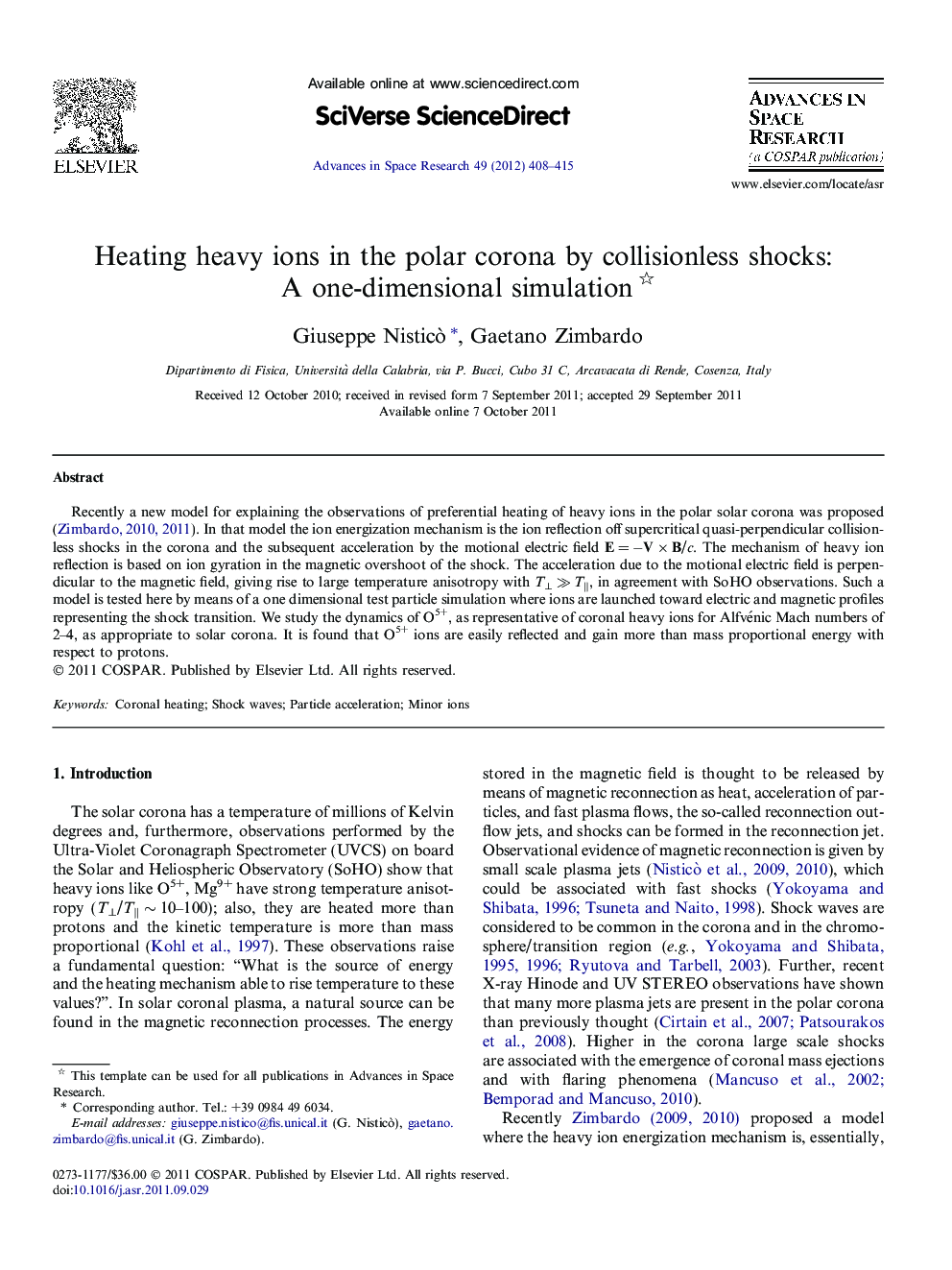| Article ID | Journal | Published Year | Pages | File Type |
|---|---|---|---|---|
| 1764658 | Advances in Space Research | 2012 | 8 Pages |
Abstract
Recently a new model for explaining the observations of preferential heating of heavy ions in the polar solar corona was proposed (Zimbardo, 2010, Zimbardo, 2011). In that model the ion energization mechanism is the ion reflection off supercritical quasi-perpendicular collisionless shocks in the corona and the subsequent acceleration by the motional electric field E = âV Ã B/c. The mechanism of heavy ion reflection is based on ion gyration in the magnetic overshoot of the shock. The acceleration due to the motional electric field is perpendicular to the magnetic field, giving rise to large temperature anisotropy with Tâ¥Â â«Â Tâ¥, in agreement with SoHO observations. Such a model is tested here by means of a one dimensional test particle simulation where ions are launched toward electric and magnetic profiles representing the shock transition. We study the dynamics of O5+, as representative of coronal heavy ions for Alfvénic Mach numbers of 2-4, as appropriate to solar corona. It is found that O5+ ions are easily reflected and gain more than mass proportional energy with respect to protons.
Related Topics
Physical Sciences and Engineering
Earth and Planetary Sciences
Space and Planetary Science
Authors
Giuseppe Nisticò, Gaetano Zimbardo,
